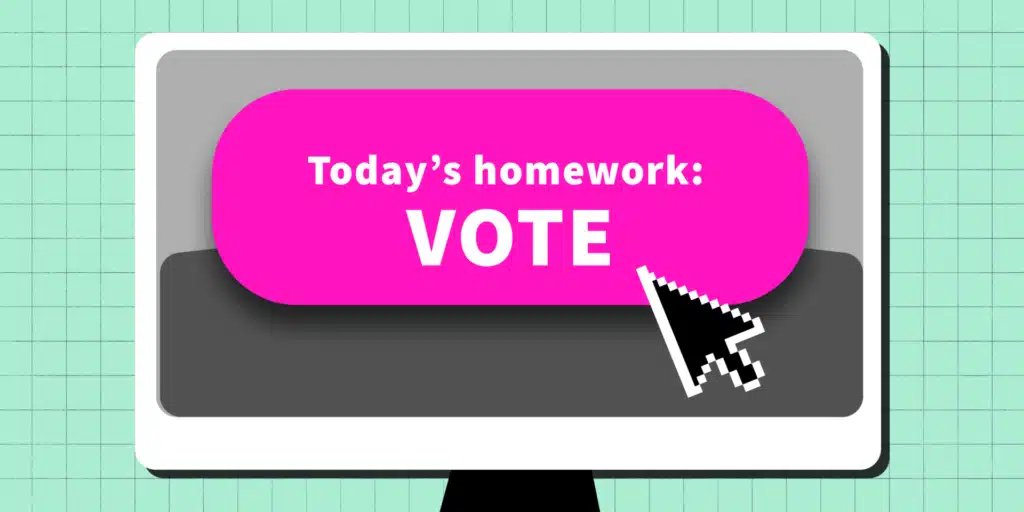The 2020–21 academic year wasn’t easy. With socio-economic, mental health, caretaking challenges and more thrown into the mix, first-generation college students were hit particularly hard. Research from the University of California, Berkeley finds that first-generation students, especially those from low-income backgrounds and marginalized communities, are more likely to experience financial hardship and increased strain on their mental wellbeing. They’re also more likely to lack access to the technology needed to successfully navigate online education.
But educators can help these students by designing in-person learning experiences that consider their needs, and help them thrive academically. We share six simple ways that educators can meet the needs of first-gen students—all with flexibility, engagement and affordability in mind.
→ Take advantage of Top Hat Basic’s free active learning solution today
1. Incorporate a basic needs security statement on your syllabus
First-generation college students were more than twice as likely as other students to face food insecurity (36 percent versus 16 percent) during the pandemic. A basic needs security statement is a short paragraph, included in your syllabus, which reminds students where and how to seek out support for housing, nutrition and other needs on campus. Post this information as well in highly accessible places, such as on your learning management system, or on your chalkboard in class.
2. Check for bias in course design
Without realizing it, your assignments or course design may be biased against students who have had little familiarity or interaction with the higher-education system. For instance, asking students to choose a partner for a project may disproportionately exclude first-gen students who might not have an established circle of peers. Alternatively, asking students to buy multiple textbooks or subscribe to a handful of teaching platforms for quizzes or polls doesn’t level the playing field, given the associated costs.
Instead, consider inviting your teaching assistants to review and complete certain assignments or activities in advance to make sure first-gen students have the same opportunities to succeed. An equally effective way to reduce your bias is by asking for student feedback early and often. Consider using a student interest inventory, inquiring about first-generation status and what type of support learners expect from you.
3. Source affordable course materials
In fall 2020,1 first-gen students were almost twice as likely to have concerns about paying for their education, compared to other students. Buying textbooks and course materials—on top of paying for rent, food, childcare and more—can be an impossible choice. If your course absolutely requires an assigned textbook, alert your class to rental or campus buy-back programs, where students can sell their book back to campus at the end of the semester for a profit. Top Hat Basic also offers a course-delivery solution with affordability in mind. You’ll have access to polls, quizzes, discussions and more, which can be run in person or online—for free.
There are plenty of nationwide scholarships designed for first-generation college students, as well. Be sure to familiarize yourself with your own campus’ financial aid resources, including grants, bursaries and scholarships, and pass these resources along to your students early in the semester.
4. Link students to networking and mentorship opportunities
The value of networking cannot be overstated. Not only does this help first-generation students connect with alumni and community members on a personal level, networking may ultimately help them launch their careers. Inviting peer mentors to your class—some of whom may have been first-gen students themselves—can help students feel comfortable disclosing concerns or anxieties in an informal, supportive environment. The people you invite may specialize in a given field (such as a vocal coach in a theatre or public-speaking class). Alternatively, you might consider bringing in guest lecturers or career coaches to give students a glimpse into what a typical career in their desired field may entail.
5. Set the foundation for student success in your in-person classroom
While a mix of in-person and online instruction may be coming to campuses this fall, be sure to keep the needs of first-generation college students in mind. Data reveal that 55 percent of first-gen students rank face-to-face learning as their preferred learning environment compared to hybrid or online education.2 Spotlight campus resources—such as a writing center—that students who use English as a second language may refer to for support. You might even incentivize students to attend workshops and seminars by assigning one or two bonus marks for attendance.
College isn’t a straightforward path for first-gen students (or their parents) to navigate. Consider involving students’ parents in the learning process to make them feel just as connected to the higher-ed experience. Alecea Standlee, a first-generation college student and Assistant Professor of Sociology at Gettysburg College, writes that tying course activities or curriculum to students’ personal lives may reduce some anxiety or embarrassment that first-gen students carry. Standlee notes that biography activities or a budgeting exercise can help students seek out support from those they’re most comfortable around.3
6. Prioritize transparency and a sense of belonging
Thoughtful course design can help students who come from different cultures or socioeconomic statuses feel equally included. When running collaborative activities, be sure to assign students from all backgrounds to different groups to ensure no one gets left out. Consider setting aside a portion of your lecture or tutorial time for group work, being mindful of students’ caretaking, employment or connectivity concerns outside of the classroom.
No matter where you teach, there’s no such thing as over-communicating. The first weeks of the semester can be a culture shock for first-generation students. Avoid assuming your students know your expectations. Instead, be clear and explicit with assignment due dates and grace periods, what your participation policy is, where to seek out social-emotional support and more.
→ Access Top Hat Basic: a free, collaborative and engaging learning solution
References
- Soria, K. M. et al. (2020). First-Generation Students’ Experiences During the COVID-19 Pandemic. SERU Consortium, University of California, Berkeley and University of Minnesota. https://docs.google.com/document/d/1bvQcPTRIjczu_dHWCyw25AP2_VUcD9uGJ9qL30VnrFY/edit#
- Frogge, G. & Woods, K. (2018). Characteristics and Tendencies of First and Second-Generation University Students. College Quarterly, 21(2). http://collegequarterly.ca/2018-vol21-num02-spring/characteristics-and-tendencies-of-first-and-second-generation-university-students.html
- Standlee, A. (2019). Supporting First-Generation Students. Inside Higher Ed. https://www.insidehighered.com/views/2019/04/11/policies-and-practices-help-first-generation-college-students-succeed-opinion


